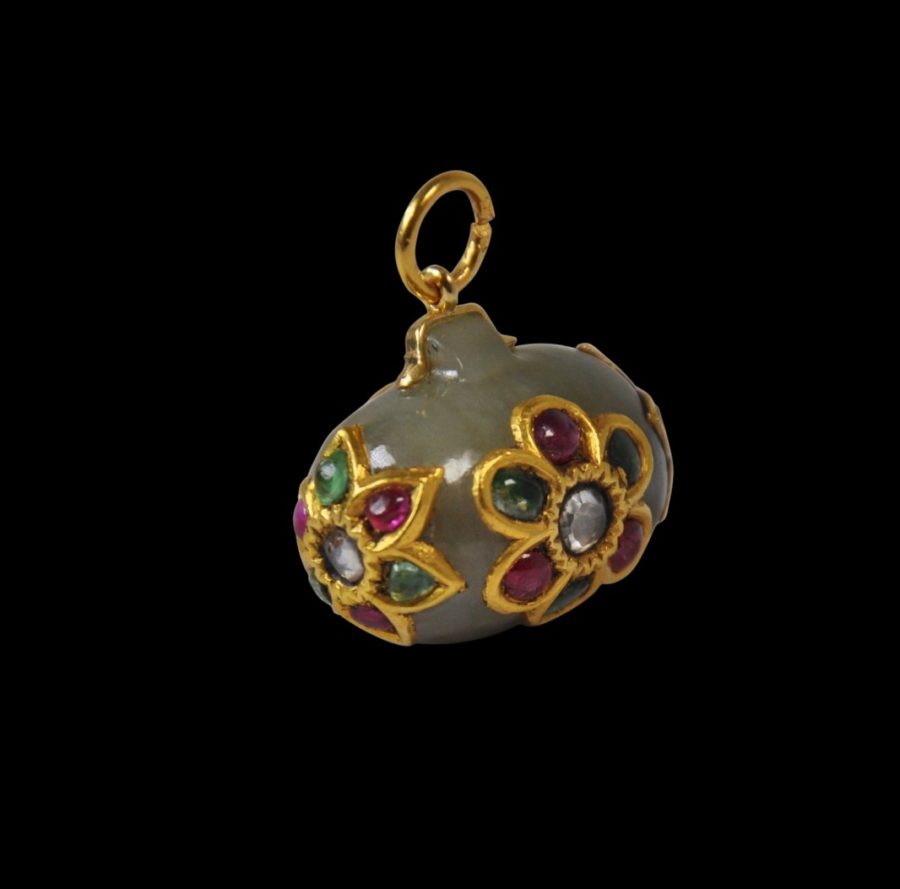This very fine pendant of symmetrical ovoid form is carved from a single, translucent piece of white or ‘mutton fat’ nephrite jade (the colour is more a pale greyish-green and with excellent uniformity).
It is decorated with four six-petalled flowers spaced equidistant about the pendant and set with four diamonds, twelve emeralds, and twelve rubies, all in gold kundan settings. The gold used in such work typically was as close as possible to 24-carats.
It is from northern India and probably made in Delhi. It accords with Mughal tastes, although could be worn by both Muslims and Hindus.
The top has a small rectangular section which is mounted with a gold fixture and loop to allow hanging, usually from around the neck.
This example is particularly fine – indeed, finer than most published examples. It is in perfect condition without losses and repairs.
References
Bala Krishnan, U.R., & M.S. Kumar, Dance of the Peacock: Jewellery Traditions of India, India Book House Ltd, 1999.
Geoffroy-Schneiter, B., Asian Jewellery: Ethnic Rings, Bracelets, Necklaces, Earrings, Belts, Head Ornaments, Skira, 2011.
Keane, M., Treasury of the World: Jewelled Arts of India in the Age of the Mughals – The Al-Sabah Collection Kuwait National Museum, Thames & Hudson,
2001.
Moura Carvalho, P., Gems and Jewels of Mughal India: Jewelled and Enamelled Objects from the 16th to 20th Centuries, The Nasser D. Khalili Collection of Islamic Art, Volume XVII, The Nour Foundation, 2010.
Untracht, O., Traditional Jewelry of India, Thames & Hudson, 1997.









